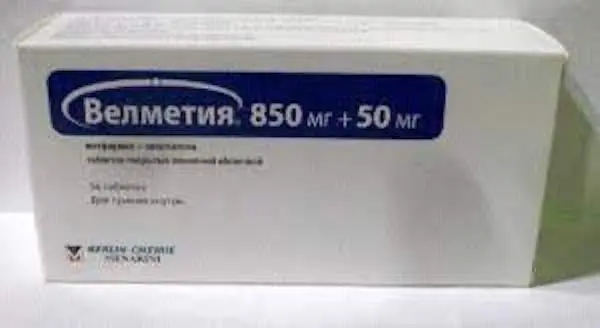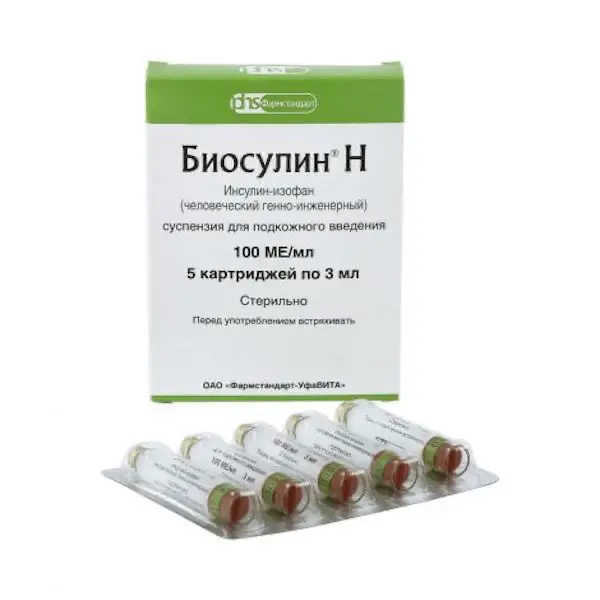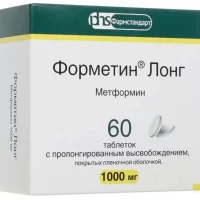Description
Velmetia Pharmacodynamics
Velmetia® is a combination of two hypoglycemic drugs with complementary mechanism of action, designed to improve glycemic control in patients with type 2 diabetes: sitagliptin, an enzyme inhibitor of dipeptidyl peptidase-4 (DPP-4), and metformin, a representative of biguanide class.
Indications
Monotherapy
Velmetia® is indicated as initial therapy for patients with type 2 diabetes to improve glycemic control, when diet and exercise do not allow for adequate control.
Velmetia® is indicated as adjunctive therapy to diet and exercise regimen to improve glycemic control in patients with type 2 diabetes mellitus who have not achieved adequate control on metformin or sitagliptin monotherapy, or after unsuccessful combined treatment with the two drugs.
Combination therapy
Velmetia® is indicated for patients with type 2 diabetes to improve glycemic control in combination with sulfonylurea derivatives (triple combination: metformin + sitagliptin + sulfonylurea derivative) when diet and exercise regime in combination with two of these three drugs: metformin, sitagliptin or sulfonylurea derivatives do not result in adequate glycemic control.
Velmetia® is indicated for patients with type 2 diabetes to improve glycemic control in combination with thiazolidinedione (PPARy-receptor agonists activated by peroxisome proliferator) when diet and exercise regimen in combination with two of these three drugs: metformin, sitagliptin or thiazolidinedione do not result in adequate glycemic control.
Velmetia® is indicated for patients with type 2 diabetes to improve glycemic control in combination with insulin, when diet and exercise regimen in combination with insulin do not lead to adequate glycemic control.
Contraindications
– Known hypersensitivity to sitagliptin, metformin or any of the components of Velmetia®.
– Diabetes mellitus type 1.
– Renal disease or decreased renal function (with serum creatinine concentration ≥1.5 mg/dL and ≥1.4 mg/dL in men and women, respectively, or decreased creatinine clearance (<60 ml/min), including due to cardiovascular collapse (shock), acute myocardial infarction or septicemia.
– Acute conditions with risk of renal dysfunction:
– Dehydration (in diarrhea, vomiting), fever, severe infectious diseases,
– hypoxic conditions (shock, sepsis, renal infections, bronchopulmonary diseases).
– Acute or chronic metabolic acidosis, including diabetic ketoacidosis (with or without coma).
– Clinically pronounced manifestations of acute and chronic diseases that can lead to the development of tissue hypoxia (including heart or respiratory failure, acute myocardial infarction).
– Extensive surgery and trauma when insulin therapy is indicated (see section “Special Indications”).
– Hepatic insufficiency, liver dysfunction.
– Chronic alcoholism and acute alcohol poisoning.
– Pregnancy, breast-feeding.
– Lactoacidosis (including in the anamnesis).
– Use for at least 48 hours before and for 48 hours after radioisotopic or radiological studies with iodine contrast agent (see section “Interaction with other medicinal products”).
– Compliance with a hypocaloric diet (less than 1000 kcal/day).
– Children under 18 years of age.
Dosage and administration
- General information
- The dosing regimen of Velmetia® should be chosen individually, based on current therapy, efficacy and tolerability, but not exceeding the maximum recommended daily dose of sitagliptin 100 mg.
- Velmetia® is usually administered as a twice-daily regimen with meals, with a gradual increase in dose to minimize possible gastrointestinal (GI) side effects characteristic of metformin.
- Dosing recommendations.
- The initial dose of Velmetia® depends on the current hypoglycemic therapy. Velmetia® is taken twice a day with meals.
The following dosages of the drug are suggested:
850 mg metformin + 50 mg sitagliptin,
1000 mg metformin + 50 mg sitagliptin. - Starter therapy
- For patients with type 2 diabetes mellitus with inadequate glycemic control on a diet and exercise regimen, the recommended starting dose is 500 mg metformin + 50 mg sitagliptin* twice daily. Subsequently, the dose may be increased to 1000 mg metformin + 50 mg sitagliptin twice daily.
- For patients who have not achieved adequate control on metformin monotherapy
The recommended starting dose of Velmetia® for patients who have not achieved adequate control on metformin monotherapy should provide the recommended therapeutic daily dose of sitagliptin 100 mg, that is, 50 mg sitagliptin twice daily plus the current metformin dose. - For patients who have not achieved adequate control on sitagliptin monotherapy
The recommended starting dose for patients who have not achieved adequate control on sitagliptin monotherapy is 500 mg metformin + 50 mg sitagliptin* twice daily. Subsequently, the dose may be increased to 1000 mg metformin + 50 mg sitagliptin 2 times a day. In patients taking a dose of sitagliptin adjusted for renal failure, treatment with Velmetia® is contraindicated (see section “Contraindications”). - For patients taking a combination of sitagliptin and metformin
When changing from the combination treatment with sitagliptin and metformin, the starting dose of Velmetia® may be equivalent to the doses of sitagliptin and metformin taken separately. - For patients taking two of the three hypoglycemic drugs listed above, sitagliptin, metformin, or sulfonylurea derivatives
The starting dose of Velmetia® should provide the recommended therapeutic daily dose of sitagliptin 100 mg, i.e., 50 mg sitagliptin twice daily. The starting dose of metformin is determined based on the level of glycemic control and the current (if the patient is taking this drug) dose of metformin. - Increasing the dose of metformin should be gradual to minimize associated gastrointestinal side effects. In patients taking a sulfonylurea derivative, it is reasonable to reduce the current dose to reduce the risk of sulfonyl-induced hypoglycemia (see section “Special Precautions”).
- For patients taking two of the three hypoglycemic drugs listed above, sitagliptin, metformin, or PPARy-receptor agonists (thiazolidinediones)
The starting dose of Velmetia® should correspond to a daily dose of sitagliptin 100 mg, i.e. 50 mg sitagliptin twice daily and a previously taken dose of metformin. If it is necessary to increase the dose of metformin, gradual titration of the drug is recommended to avoid gastrointestinal side effects. - For patients taking two of the three hypoglycemic drugs listed, sitagliptin, metformin, or insulin
- The starting dose of Velmetia® should correspond to a daily dose of 100 mg sitagliptin, i.e. 50 mg sitagliptin twice daily and a previously taken dose of metformin. If it is necessary to increase the dose of metformin, gradual titration of the drug is recommended to avoid gastrointestinal side effects. Patients may need to reduce the dose of insulin to prevent the risk of hypoglycemia (see section “Cautions”).
- Special studies to evaluate the safety and efficacy of switching from treatment with other hypoglycemic drugs to treatment with the combination drug Velmetia have not been conducted. Any changes in treatment of type 2 diabetes mellitus should be performed with caution and under control of appropriate parameters with regard to possible changes in glycemic control.
- Administration in children
The safety of Velmetia® in children and adolescents younger than 18 years has not been studied.
* – When prescribing initial therapy, note that Velmetia® in a dosage of 500 mg of metformin + 50 mg of sitagliptin is not registered in the Russian Federation.





